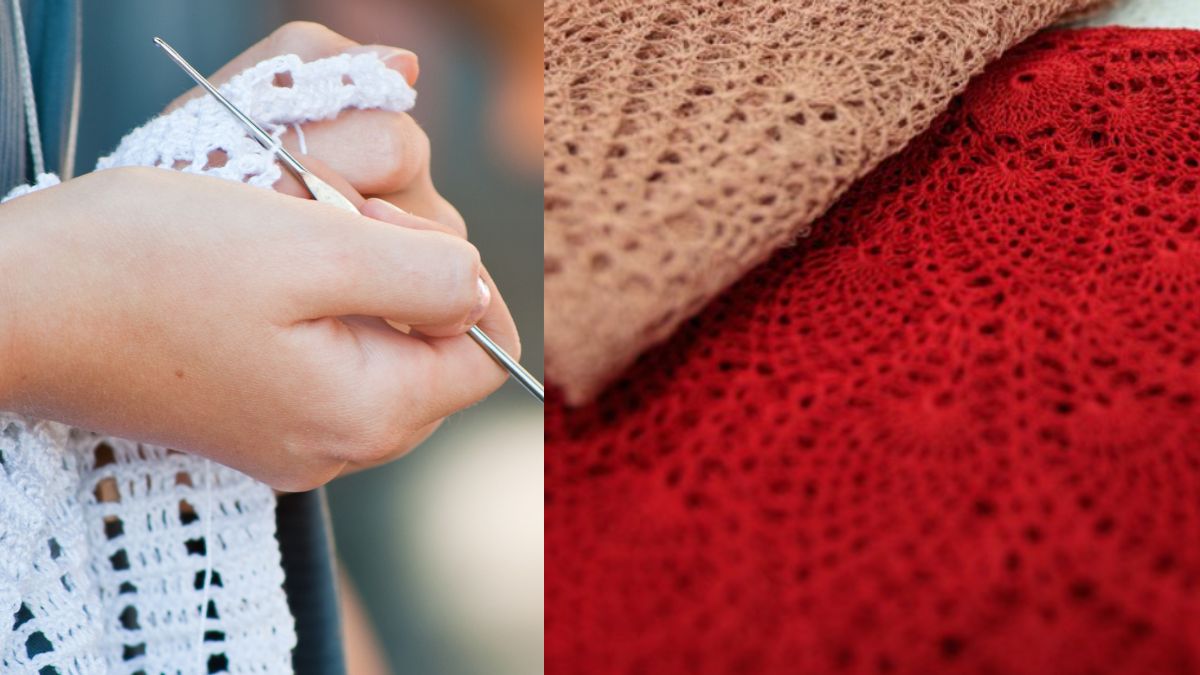Narasapur, a quaint town nestled in the coastal plains of Andhra Pradesh, is renowned for its centuries-old tradition of crochet lace-making. This intricate craft, known locally as “Narasapur crochet,” has not only become an integral part of the cultural heritage of the region. It has also earned international recognition. The prestigious Geographical Indications (GI) tag has now recognised the delicate crochet lace skill.
About Narasapur Crochet
Azadi Ka Amrut Mahotsav, Celenrating 75 Years of India's Independence…!#Narsapur's famed hand-made crochet industry is unique and famous amidst the art & craft of Andhra Pradesh. #artandcraftofap #amazingandhra #andhrapradeshtourism #dekhoapnadesh #EkBharatShreshthaBharat pic.twitter.com/2Dzi1BF8He
— AP Tourism (@Tourism_AP) December 10, 2021
The picturesque town’s lace market is a treat to behold. Some of the world’s best-handcrafted crochet lace is made here, making it a popular trip for lace connoisseurs. The origins of Narasapur crochet can be traced back to the 19th century when it was introduced to the region by British colonisers. Inspired by European lace-making techniques, local artisans began to experiment with their variations. Over time, Narasapur crochet evolved into a unique art form.
Women from the rural community in Narsapur took to this trade, mostly fourth-generation lace makers. Their main market used to be Pune, where the majority of their customers were from the Mediterranean region. There are even NGOs comprised of around one thousand artisans have been established. Here, the government established a distinctive lace park in 2004 to give the local crochet lace producers a venue to display their wares.
With crochet art becoming mainstream, many International fashion brands have adopted this art. These exquisitely made lace goods are shipped to well-known nations like the United Kingdom, the United States, and France. The distinctive lace goods are excellent keepsakes that are ideal for giving to close friends and family.
Also Read: X User Starts North Vs South Indian Breakfast Debate After Choosing Idli Over “Oily” Chole Bhature
How Does The Narasapur Crochet Look Like?
The Lace Makers of Narsapur, AP 😊
Making crochet lace, skirts, 👗frocks, 👜👝 bags, table cloths, mats, handkerchiefs, etc.@artzfly #artzfly pic.twitter.com/XXIR2H2DST— artzfly – Handmade in India (@artzfly) May 9, 2020
The process begins with the selection of high-quality cotton yarn, which is then wound into small balls and dyed in a myriad of vibrant hues. Skilled artisans, often women from rural communities, then begin the laborious task of creating intricate patterns and designs.
The patterns used in Narasapur crochet are as diverse as the region’s culture, drawing inspiration from nature, mythology, and everyday life. Floral motifs, geometric patterns, and intricate borders are common themes.
Despite its delicate appearance, Narasapur crochet is incredibly durable and versatile. Traditionally, it was used to embellish clothing. Particularly, these used to be about sarees and blouses, adding a touch of elegance to everyday attire. However, in recent years, Narasapur crochet has found its way into home decor, with artisans creating stunning tablecloths, curtains, and bedspreads that showcase the beauty of this ancient craft.
Do you own something of Narasapur Crochet?
Cover image credits: X/Andhra Pradesh Tourism
First Published: March 07, 2024 6:52 PM




